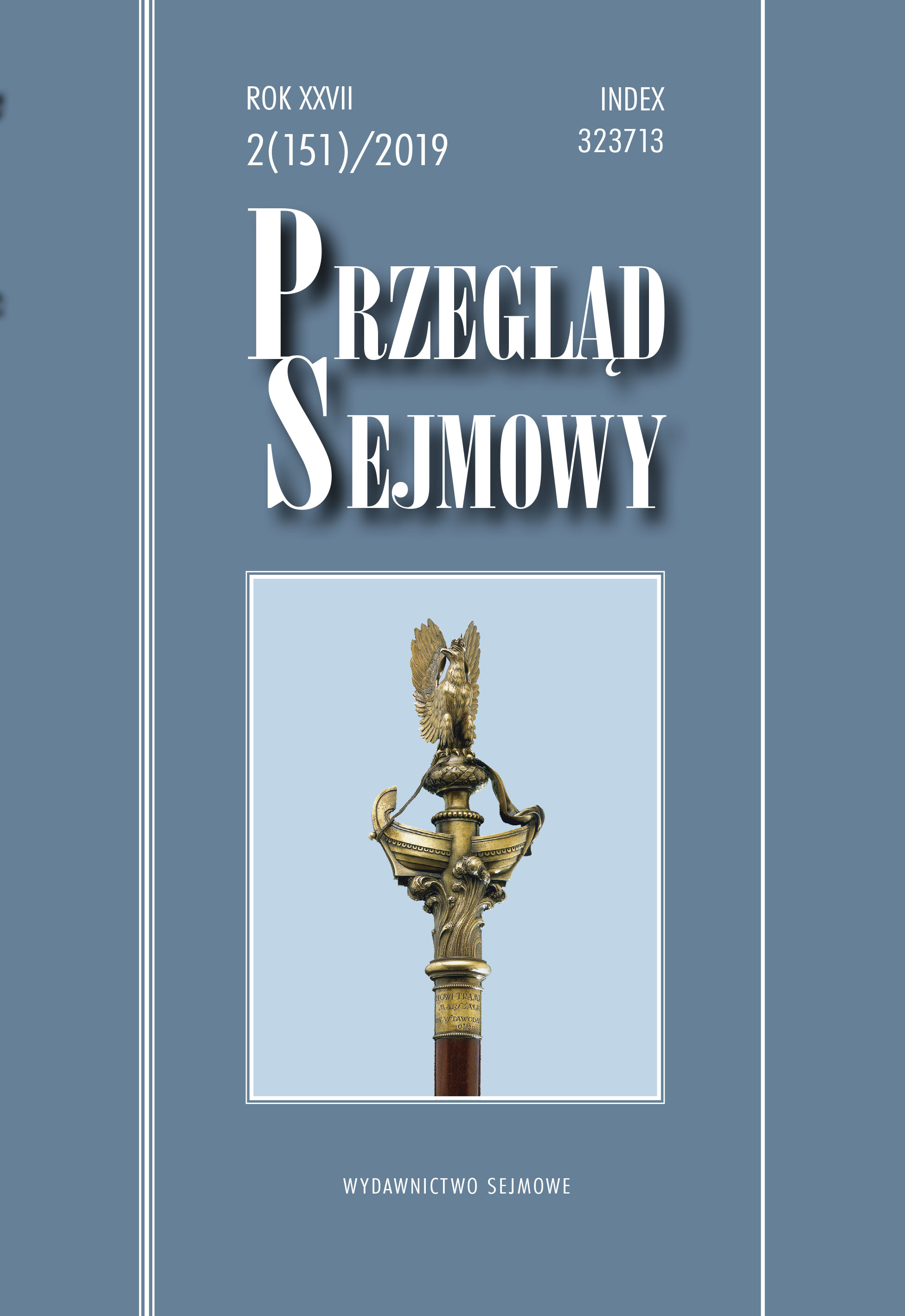Od Maapäev do Riigikogu. Proces tworzenia estońskiego parlamentaryzmu po I wojnie światowej
From Maapäev to Riigikogu. The process of forming Estonian parliamentarism after the First World War.
Author(s): Magnus IlmjärvSubject(s): History of Law, Political history
Published by: Kancelaria Sejmu
Keywords: Estonian parliamentarism; First World War; establishing the Estonian parliament; Maapäev; Riigikogu; Asutav Kogu
Summary/Abstract: The actions of the Russian Provisional Government which came to power in February 1917 were in general supported by the Estonian nationalists. The Committee of the Estonian Knighthood stated in the name of the Estonian Baltic nobles and local governments that it supported the actions of the Provisional Government and called all classes to follow its instructions and orders. After the February revolution the Estonian national movement urged the reform of local self-governments and the uniting of the Governorate of Livonia counties inhabited by Estonians with the Governorate of Estonia. This was achieved. In October of 1917, after the Bolsheviks came to power in Petrograd, representatives of Estonian bourgeois circles raised the call for independence. This resulted primarily from the Bolsheviks’ approach to property rights. Estonian Bolsheviks, however, believed that the future of the Governorate of Estonia could only be bound to Soviet Russia. For the Baltic Germans, the 1917 Russian revolutions and the resultant seeking of autonomy by the Estonians and Latvians was a threat to their elitist position and the class system. Therefore, they welcomed the German occupation and strove for Estonia’s union with Germany or for the creation of a dukedom allied with Germany. The plan for a dukedom did not materialize. The German occupation of Estonia brought with it, on the one hand, the destruction of Bolshevik power, and on the other hand, the genesis of Estonian national unity and the feeling of belonging together. The Constituent Assembly, elected in February–March of 1919, established the bases for Estonia’s governing system: the constitution and the agrarian law. The adoption of the Agrarian Reform Law and the solving of land issues so that it met the expectations of the majority of the people created a situation where thousands of soldiers felt that they were fighting for their own land. This contributed markedly to winning the War for Independence. Based on the agrarian law and other supplemental decisions, during the period 1919–1939, 48,288 smallholdings were established. The constitution and the agrarian law finally ended the power of the Baltic nobility over the fate of the Estonian people. The text of the constitution adopted by the Constituent Assembly in 1920 remained largely in effect in the subsequent constitution but what changed was the structure of the government. In 1932 and 1933, the electorate was asked to vote on a total of three constitution projects. The last of these received the majority of votes in the October 1933 voting and went into effect as the constitution on 24 February 1934. This second constitution provided for the creation of the office of a president with far-reaching powers. The presidential election could not be held, as on 12 March 1934 a coup took place which insured that the Head of State, Konstantin Päts, retained power. In February 1936 the Head of State decided to ask the people to vote on whether a new constitution should be framed and whether a bicameral National Assembly (Rahvuskogu) should be elected. A general election was held and in early summer of 1937 the National Assembly prepared the text of the constitution, using as model also the constitution of Poland. This became law after a vote in the National Assembly and after the Head of State’s decree and went into effect on 1 January 1938.
Journal: Przegląd Sejmowy
- Issue Year: 2019
- Issue No: 1
- Page Range: 85-109
- Page Count: 25
- Language: Polish

